Best Scuba Diving in Florida: 21 Dive Spots for 2024
There are plenty of great dive spots on the West Coast and all along the East Coast as well. But you know as well as we do that the best scuba diving is in Florida. It’s the dive capital of America. The problem is that you’re spoiled for choice. You could dive at 100 dive sites in Florida and still barely scratch the surface. Let’s narrow down the field a little for you. We think these spots offer the best of the best in Sunshine State scuba diving and snorkeling. No matter what you want to get out of a dive, we have you covered. From amazing marine life to ship wrecks and more. Check out the best scuba diving in Florida.
Where to Go Scuba Diving in Florida
1. USS Oriskany
In 2006, the USS Oriskany was sunk about 22 miles south of Pensacola. It was part of an aggressive artificial reef program. The result is that the former aircraft carrier has become an amazing scuba diving site. In fact, it’s the largest vessel ever sunk to create an artificial reef.
The Oriskany is over 900 feet long and currently sits in 200 feet of water. People call it the Great Carrier Reef, a play on Australia’s Great Barrier Reef.
Be wary of those mid column currents. They can be strong and if you’re not prepared, it can be dangerous. This is not a first-timer’s dive by any means. But if you have some experience, it’s one of the best you’ll find in the state.
The reef is obviously home to a lot of coral. Expect to see sharks and barracuda also. There’s an abundance of fish life all throughout. If you like taking photos of your dives, the scenery here is second to none.
2. Christ of the Abyss
You’re unlikely to find a more iconic dive site in all of Florida. Christ of the Abyss is a 2-ton statue of Jesus Christ made from bronze. It stands 8.5 feet tall and you’ll find it just off the coast of Key Largo in Florida.
Located in John Pennekamp State Park, the Christ statue was lowered back in 1965. It’s been a popular tourist spot ever since for divers looking for a great photo opportunity. The Key Largo statue is actually the third statue cast from the same mold. The first is off the coast of Italy. The second one can be found in Grenada. The statues are meant to commemorate those who have lost their lives at sea. But they also welcome those who enjoy diving and want to experience the world under the sea.
The statue in the coral reefs in Key Largo is one of the most famous scuba dive sites in Florida. You’ll find eagle rays and stingrays in the waters around the statue as well.
The park has a full service PADI dive shop available. If you’re interested, it’s incredibly easy to book a tour or get instructions. Whatever your skill level, the park should be able to accommodate you.
3. Tenneco Towers Dive Sites
Looking to check out South Florida’s largest artificial reef? You want Tenneco Towers. This is the result of five decommissioned oil platforms being dropped in the water. They’re located between Miami and Fort Lauderdale. You can only visit three of them on normal dives. The other two are reserved for technical dives or for fishing. Not that you’ll be missing out with the three available.
Sponges and coral have claimed the body of the towers. That has lead to the creation of an incredible artificial reef. But the abundance of marine life throughout is amazing. Turtles, barracuda, tuna and the occasional bull shark can be found all over this dive site. Depths range from 60 feet to 130 feet.
The best way to do the dive is from the bottom up, circling the square as you ascend. You can investigate the different levels of the platform as you go. Just remember, this is not a beginner dive.
4. Looe Key
Looe Key reef is another of the great dive destinations in Florida. The reef is named for a British Man O’ War that ran aground all the way back in 1744. The reef is part of a 5.5 square mile marine sanctuary. The reef itself is a U-shape and clocks in at around 200 yards in length and 800 yards in width.
Three ferries head out to the reef every day so getting there shouldn’t be an issue. Unlike some reefs in the area, this is a great spot for divers of all skills. Even snorkelers will have a great time here.
Water can get between 30 and 40 feet deep. At the south end there is a steep drop to 100 feet. Strong currents are out that end so keep your distance if you’re not prepared. There’s a ton to see in the shallow waters though from goliath grouper to parrotfish to nurse sharks. Because the waters are protected you’ll also find many kinds of coral that are hard to spot elsewhere. That includes some super rare black coral.
5. Spiegel Grove
Located off the coast of Key Largo, the USS Spiegel Grove is one of Florida’s must-do dives. Sunk back in 2002, this massive Navy ship is an incredible opportunity. The Spiegel Grove was a Navy Landing Dock Ship. It’s 510 feet in length so there’s a ton to explore. Now a massive artificial reef, it’s become home to a huge amount of marine life.
If you’re committed to a thorough dive, this one’s for you. It’s pretty much impossible to check out the whole site in a single dive. More scuba divers opt for at least two dives, but you could easily do three or four.
You can enter the wreck itself but you need wreck certification to do so. Overall, it’s best for intermediate and advanced divers so make sure you know your stuff before giving those fins a workout. The deck can be found at 65 feet but it goes down to 130 feet. Essentially, this is a mini wall dive that was artificially made. That makes for a unique and fun dive that it’s hard to duplicate.
6. Dry Tortugas National Park
If you’re down for history and awesome diving, Dry Tortugas is a must have dive destination. This one harkens back to the days of pirates. Ponce De Leon discovered these coral islands back in 1513. Fort Jefferson may be the most famous thing on land there these days, but it has history. Once upon a time this was even a legit pirate hideaway.
Conchs, starfish, and other tropical species can be seen easily. You get a great view just snorkeling along the white sands by the shore or shore diving. It’s what you find when you dive that really makes it though. As a passage from the Gulf through to the Atlantic a lot of vessels passed here. And thanks to the harsh weather and reefs, not everyone made it. The rich diversity in wrecks in the area is incredible. You had ships carrying military supplies, gold, food, textiles, tobacco; you name it. There’s even the infamous German submarine U-2513.
Novice divers can stay closer to the shore and check out wrecks like the Windjammer. But with nearly 300 wrecks in the area, it’s safe to say you’ll see something in Dry Tortugas National Park.
7. Miami Beach
How can you discuss diving in the Sunshine State and not cover Miami Beach? Often overlooked for being too big or too touristy, don’t dismiss Miami. Yes, Miami and Miami Beach are separate towns but in terms of diving the Atlantic coast is right there, so have at it.
Miami offers numerous artificial reefs for diving. There are also over 75 wrecks here, so you won’t be at a loss for things to see and do. For a fast-paced and fun dive, try the Wreck Trek. Just one tank will let you cover over a half dozen wrecks. Plus, you can always go back for more.
The waters off of Miami are home to octopus, grouper, eels, tarpon, and nurse sharks. The reefs have plenty of coral and sponges as well.
Belcher Barge is a great spot for divers of all skills interested in wreck diving. The 185-foot steel barge is down 60 feet and home to many different fish and coral species. Or check out the Half Moon Preserve at only 10 feet. Damsel fish and angelfish are all over this German wreck. It was the first ship captured by the British in World War One, so there’s some great history here as well.
For an advanced dive, try Blue Fire. Sunk in 1983, this wreck is down at 110 feet. Make sure your dive watch can handle it. Lots of great species to check out here and good visibility as well. It’s a great spot for underwater photography. Just remember, it’s not one for beginners.
8. Blue Heron Bridge
Blue Heron Bridge is located near Riviera Beach. This offers some of the best diving not just in Florida, but America and possibly the world. This is a diver’s dream spot. It’s located in West Palm Beach so there’re no worries about booking a boat or long travel times.
The big selling point for Blue Heron Bridge is the amazing diversity. Divers could search up and down the east coast and not find as richly a populated place as this. Batfish, manta rays, octopus, frogfish, stargazers, seahorses and so much more. All just a stone’s throw from shore making shore diving an option. And if that sounds intimidating at all, check out the depth. It’s about 12 feet on average and gets down to maybe 25 feet at the deepest. This is a great location for divers of all skills.
9. Molasses Reef
Another Key Largo location in the Florida Keys. The Molasses Reef may be the most popular diving sites in the area. Once you get in the water you’ll see why. If you like wildlife, this is your spot. There are over 600 catalogued species in the water here. That includes fish, plants, and coral. This is visually just a gorgeous dive site and well worth a trip.
Obviously there are no guarantees, but sharks and turtles are commonplace. The reef is typically swarming with spiny lobster as well. You can check out the massive winch from a vessel called the Slobodana here. It was a 170-foot wooden-hulled schooner that sank in 1887. It’s right alongside an area called Eagle Ray Alley. You can guess what you’ll find there.
Depths along the reef range from 10 feet all the way to 70 feet. There can be a bit of a current here sometimes so watch out for that. But the popularity of the dive site means there are tons of tours available.
10. The Florida Keys
Honestly, there’s so much more to the Florida Keys we don’t want to overlook any of it. From Big Pine Key to Key West to the Lower Keys, this is the destination in South Florida. You could spend months hitting all the incredible dive locations and pristine reefs. We covered Spiegel already and the Molasses Reef, but check out some of these as well.
The Shipwreck Trail through the Florida Keys offer some of the coolest dives in the world. The USNS Gen. Hoyt S. Vandeburg is a truly awe-inspiring site. You’ll find this wreck at 140 feet. It’s the southern end of the Trail and it’s pretty incredible. At over 500 feet long, this transport ship is 10 stories high and even had a weather balloon hangar.
Ten-Fathom Bar features a mini wall that drops from 25 feet to 130 feet. You can find barrel sponges that are probably bigger than you here. Eagle rays and spiny lobster are all over the area as well. If you love to dive and can make it to Florida, the Florida Keys have to be on your list.
11. Key Largo
This portion of the Florida Keys is sometimes considered the best diving in all of Florida. It’s also a contender for dive capital of the world. As we covered earlier, the most notable spot here is the Spiegel Grove. But Key Largo has a lot more than that.
There are at least 100 dive spots that offer incredible experiences in Key Largo. That’s far too many to list, but to give you an idea let’s dig into some of the coolest ones.
Mike’s Wreck has great visibility. You can find it on Elbow Reef and it’s home to many coral species and sea fans. Parrotfish, rays, moray eels and nurse sharks are common. Sea turtles can be seen here as well. As for Mike, that’s a mystery. No one actually knows what ship is wrecked here, which is part of the allure.
French Reef is probably your best bet in all of Key Largo for variety. You have ledges, caverns and tunnels to explore here. A wide range of marine species call this reef home. Expect moray eels, yellowtails, porkfish and more. Depths can go from 15 feet down to 100 feet and clarity is usually ideal. Your only big concern here is lighting. Some of the caves and tunnels are quite obviously dark.
12. Venice
Venice gets overlooked in terms of diving sometimes. Located on the Gulf Coast, Venice offers a few unique draws. Yes, there is an artificial reef here. And of course you can see grouper and barracuda and many other species of fish. The Gulf Stream keeps these waters warm much of the year. But there’s one thing Venice has that few other dive sites in the world can offer. They call this place the Shark Tooth Capital. In fact, once upon a time, Venice was the home turf of the megalodon. You know, the giant prehistoric shark that shows up in movies sometimes? They grew to a length of over 50 feet.
There are a ton of natural edges all around Venice Beach. That makes for great locations to check out coral and marine life. But there are also some cool wrecks like the German Bayronto. And for a really unique dive, check out the Five Tanks. It’s exactly what the name says, 5 perfectly intact tanks that were sunk to 60 feet below. Just be prepared. This is an advanced dive.
13. Pensacola
We already mentioned the USS Oriskany but Pensacola has so much more. The military influence here extends well beyond the city itself and under the waves. There are too many incredible wrecks off the coast. You have to give it a try at least once to appreciate the diversity of it all.
The Russian freighter San Pablo sank here in 1942 during a cargo offload. It was then used for target practice. You can find it down between 75 and 85 feet today. With 100 foot visibility this offers some great photos as well. Among the wreckage you’ll find plenty of batfish, grouper, flounder and more.
Three Coal Barges was sunk in 1974 to create an artificial reef. At 300 feet long, the reef is only about 40 feet deep. Plus, it’s a great place to check out loggerhead turtles.
You can check out the USS Massachusetts here as well. This vessel served during the Spanish-American war, making it a pretty cool piece of the past. This is one of Pensacola’s more advanced dives though. The current is relentless here, and it’s not a spot for first-timers.
For a little variety there’s also an A-7 Corsair fighter jet that actually fell off an aircraft carrier. If you love military wrecks, Pensacola has some of the best diving in Florida.
Just for sheer variety, we think Pensacola offers some of Florida’s best diving.
14. West Palm Beach
Head down to Palm Beach County for an exceptional dive experience. You have a two coral reef systems here. The reefs run parallel to the coast and are home to the biggest sea turtle population you’ll find in Florida.
Treasure hunters are always drawn to West Palm Beach. A pair of wrecks here were transporting gold and silver for the Spanish back in the day. More than one diver has surfaced with something valuable from the depths. Just don’t expect to go here and get rich.
The real treasure in these parts is marine life. Giant leatherbacks, hawksbill, green sea turtles and loggerheads all nest around here. West Palm Beach is actually the second biggest turtle nesting site in the world.
When you’ve had your fill of turtles, try a dive in Moray Alley. At 60 feet deep, this reef is home to tons of eels. Spotted purplemouth, green and goldentail all call this spot home. Check out Paul’s Reef as well for more turtles plus some sharks and huge parrotfish.
15. Fort Lauderdale
Back in the day, Fort Lauderdale was all about Spring Break. What too many people overlooked was the incredible scuba diving. While many Florida sites offer artificial reefs, Fort Lauderdale is different. The natural coral reefs here are ideal. But they have also supplemented that with many artificial reefs as well. The result is world class diving with a lot of marine life to enjoy.
You can find whale sharks in some parts of Fort Lauderdale. Not to mention a veritable jungle of coral and fans. Of course there are many tropical fish species, lobsters, barracudas and more as well.
Barracuda Reef is a great place for checking out lobsters, eels, and crabs. The ledge rises from 10 to 15 feet from the bottom. The reef itself is down around 35 feet at the deepest. The Captain Dan wreck is one of Florida’s coolest wreck dives. Sunk in 1990, it’s down around 90 to 110 feet.
The Mercedes I is probably Fort Lauderdale’s best known dive location. The vessel sank back in 1984 and it’s resting at 100 feet. When Hurricane Andrew struck it literally tore the wreck in half. That didn’t stop marine life from calling it home, however. With exceptional visibility, it’s a great place for taking photos. Just remember, this one is an advanced location.
16. Crystal River
If you love unique marine life in your dives, hit up Crystal River. Where else in the entire country are you going to be swimming with manatees? Head North of Tampa to find this incredible spot with guided trips. You can only legally do this with a guide, but there are some great tours available.
In the winter months, manatees migrate from the Gulf to the Crystal River. You can find them in abundance between November and April. As the name suggests, the waters here are very clear. You won’t have a hard time seeing any of the incredible sea life.
There are numerous dive sites along the river. They can cater to beginner divers and more advanced divers. Thanks to the many caverns you can explore, there’s enough to keep even the experts busy. You can find tarpon, grouper and even dolphins throughout the caverns here. It all depends on the time of year and, of course, a little bit of luck.
We recommend the relatively shallow waters of Mullet Spring for snorkeling. It’s also exceptional for photography thanks to water clarity. Catfish Corner has a ton of catfish, big surprise there. And Magnolia Springs is a great location to get up close with the manatees..
17. Tarpon Springs
Goliath grouper, sponges, sea anemones and octopus make their home in Tarpon Springs. Located on the Gulf of Mexico, this is a great spot for underwater photography. While there are tanks to make an artificial reef here, there’s also a crane that fell overboard. One of the coolest draws for this location is Dolphin Ledge.
Finding a good spot for scuba diving with dolphins is not always easy, but Dolphin Ledge has proven to be ideal. Along with the many other species of tropical fish and coral, it’s a spot worth checking out.
Where Can Freshwater Scuba Divers Go?
Obviously Florida is known for great scuba diving in the Atlantic Ocean and along the Gulf Coast. But there’s some great freshwater scuba diving in Florida, too.
18. Devil’s Den
At a perfect 72 degrees all the time. Devil’s Den is not nearly as evil as its name. A spring-fed dive site, this can be found near a town called Williston. A sinkhole, the sinister name comes from early settlers. They thought this might be an entrance to Hell. And when you see the steam rising from the water in the cold weather, you might understand, at least a little.
You can dive down 50 feet into the cavern. There are fossils and tunnels to swim through. That keeps it pretty interesting and unique compared to open ocean dive sites. The system is full of air pockets where you can pop up and there’s even a local catfish you can track down.
If you want something unique then Devil’s Den is your best scuba diving option. The water feels great and you won’t need a thick suit to enjoy it.
19. Rainbow River
Located in Dunnellon, Florida, Rainbow River is a great experience for drift dives. Visibility in the spring-fed lake can be an incredible 200 feet. That’s with a max depth of 25 feet. The waters offer a grassy bottom and sunbeams that pierce all the way through.
If you’re looking for a fun wildlife experience, the river is known for turtles. Gar and bass swim through the grass regularly. You’ll likely see a bird or two diving down to grab a fish before fleeing again.
One of the coolest features are the bubbling sand beds. The freshwater springs that feed the lake bubble up in numerous spots. It gives it a unique and fun appearance you won’t find in many other locations.
The dive is an easy and leisurely one. You can boat out and have the boat follow you back along the dive. Rainbow Springs State Park also offers some great camping, so you can make a dive trip of it.
20. Blue Grotto
For a true adventure in freshwater, try Blue Grotto. This is a privately owned location and is very cool. Water depth is 100 feet but there’s a lot more going on here than just a deep dive. Head down 30 feet and you’ll find a diving bell with an air supply. You and a friend can pop in and take out your regulators, then continue the dive in a personal air bubble. It’s a very unique way to experience a dive that few people have ever tried. Don’t have a friend? That’s OK, there’s a friendly turtle named Virgil in the cavern as well. He’s used to scuba divers and will often swim right up to say hello.
The walls are set with fossils for a cool experience. There’s also a guide line to take you all the way down 100 feet if you want the deep dive.
21. Ginnie Springs
If you want a natural spring dive experience, try Ginnie Springs. The water here is clear in a way you can’t imagine just reading it. When they say spring water, think of the bottled water you get at a store. The clarity here is unreal. When masked up underwater it’s like there’s no water at all. You just float in space with the fish. You really have to see it to believe it.
The spring itself is located in a forest, so camping is a great option here. Ginnie Cavern is a wide open basin. Even if you have no scuba diving experience this is a place you can handle comfortably. Head to the Devil’s Spring and you can see the trees far overheard through tannin-stained water. The natural coloration will even stick to you (it’s harmless). But it does create a cool stained glass effect on everything you see. If you want to stick to scuba diving on the Florida mainland, this is a great spot.
Final Thoughts
Florida has world class diving. That’s just a fact. We listed some of our favorite spots here but there are so many more. From South Florida to Key West to central Florida and beyond. The best dive sites are spread across the state. We tried to offer a nice, diverse range here. If you have some other favorites, let us and the other divers know in the comments.
Categories: Scuba, Snorkeling
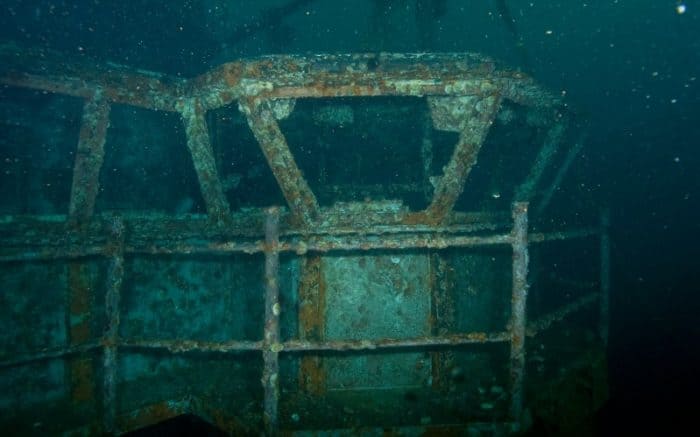
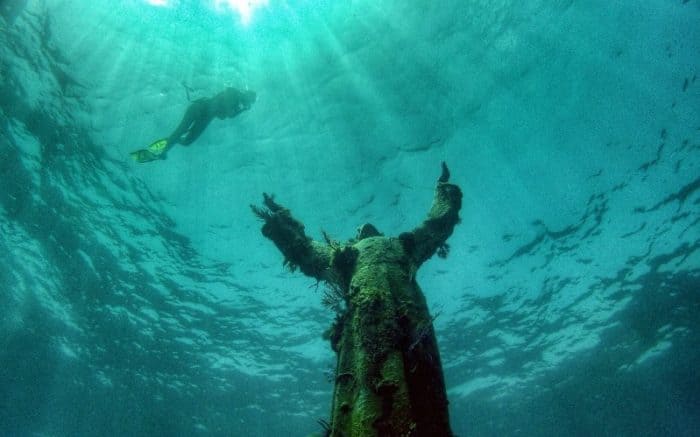
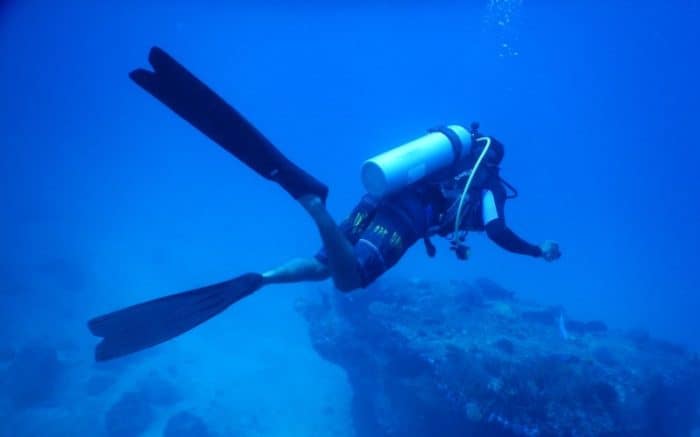
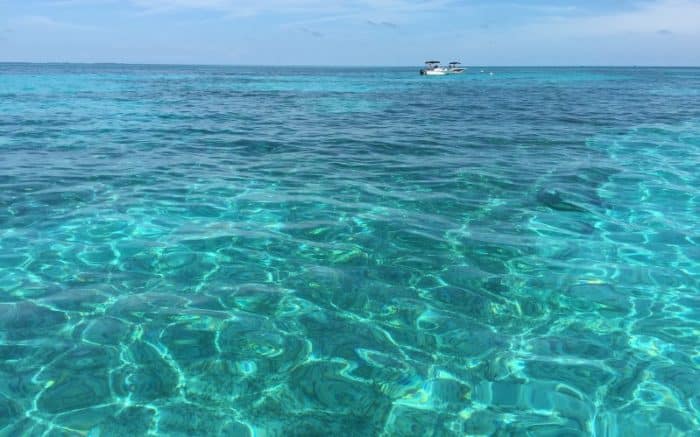
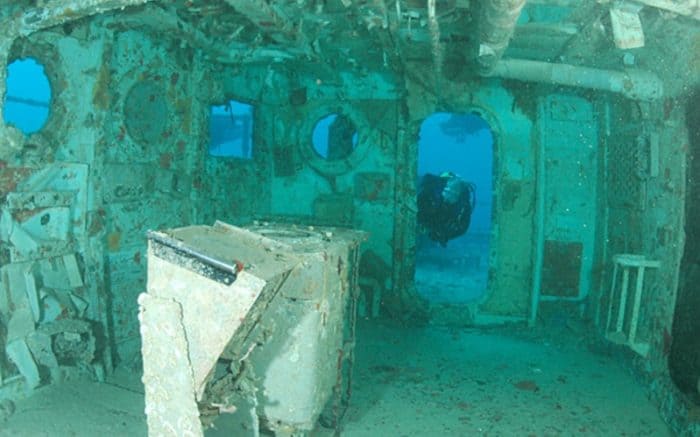
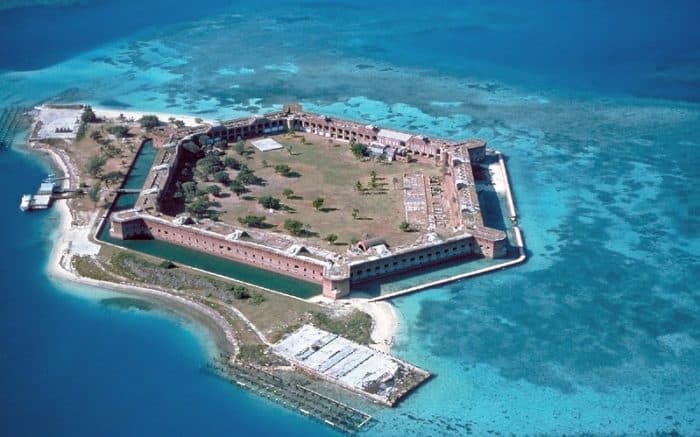
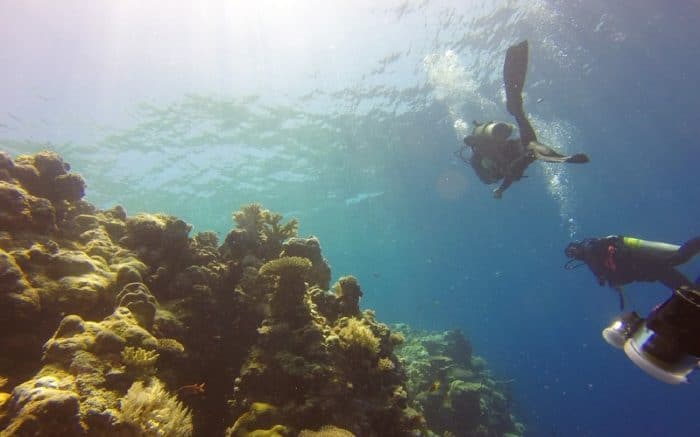
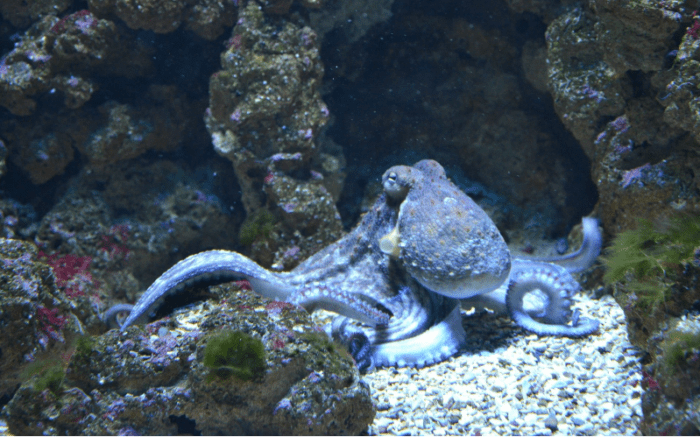
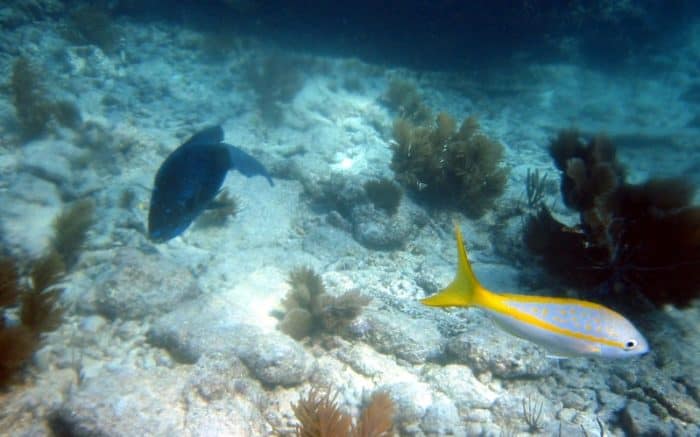
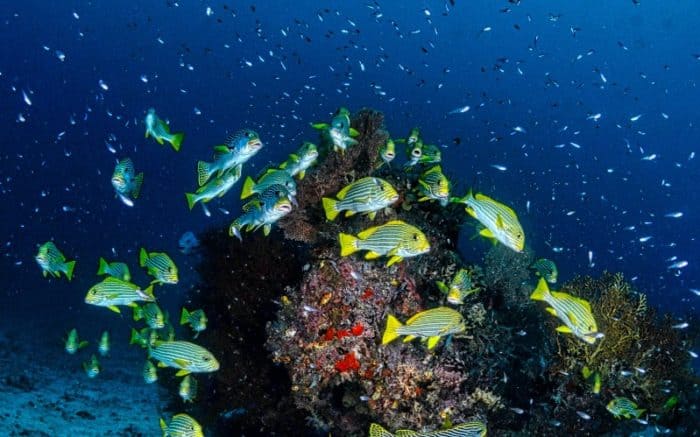
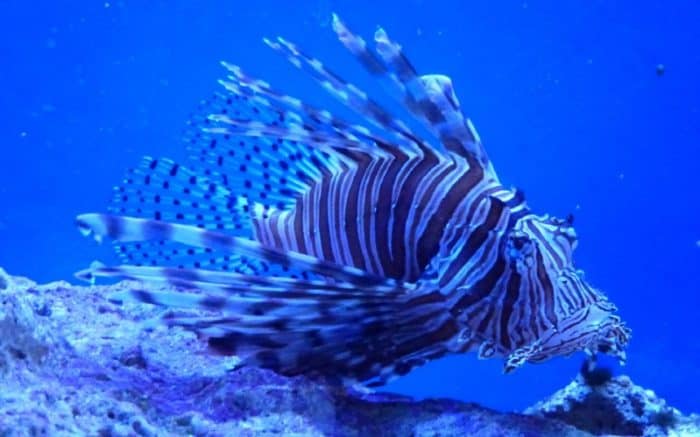
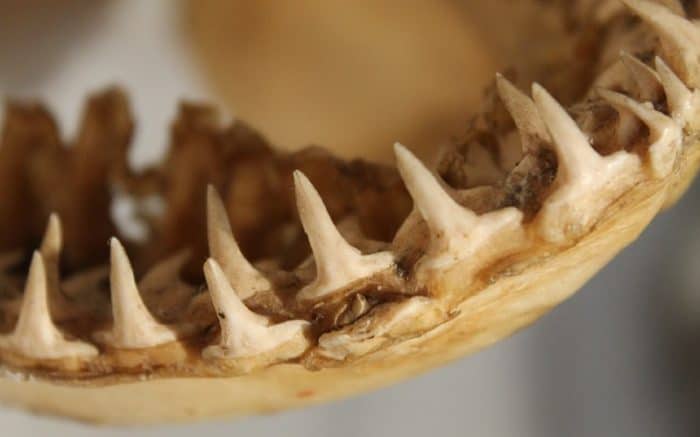
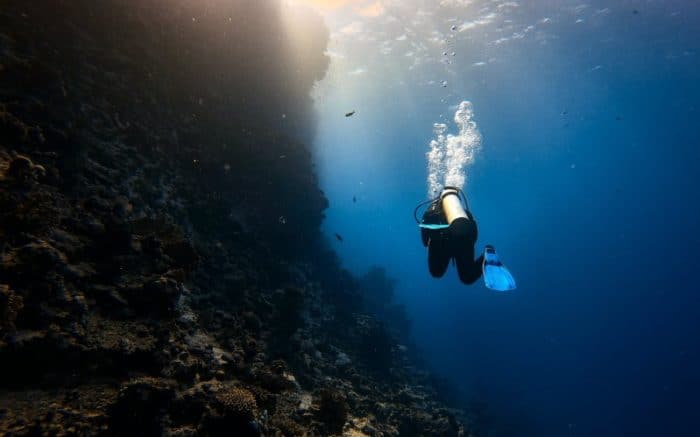
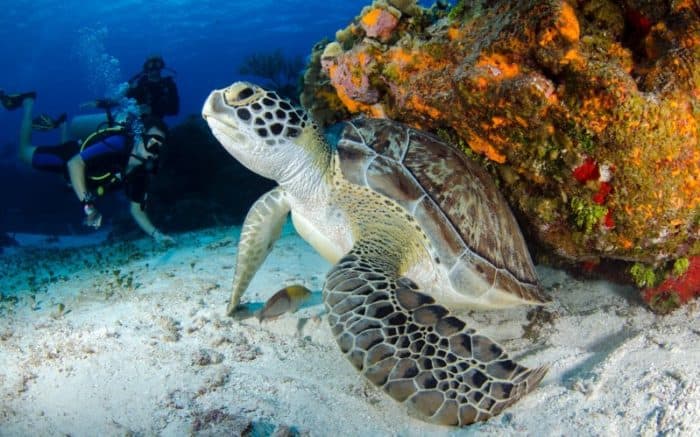
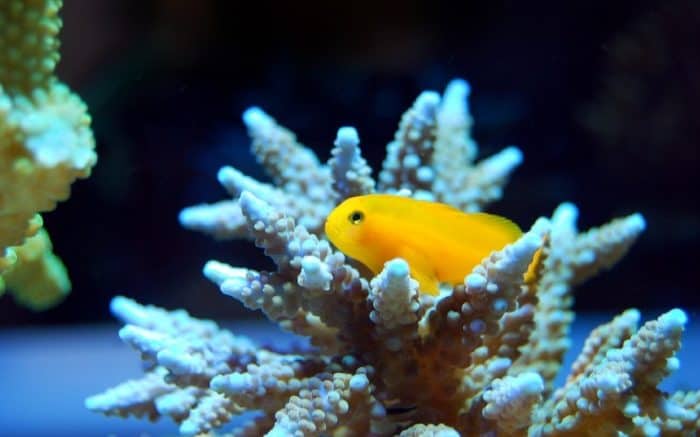
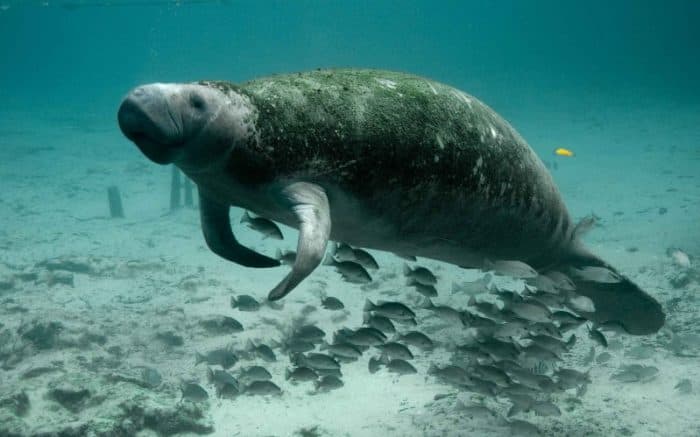
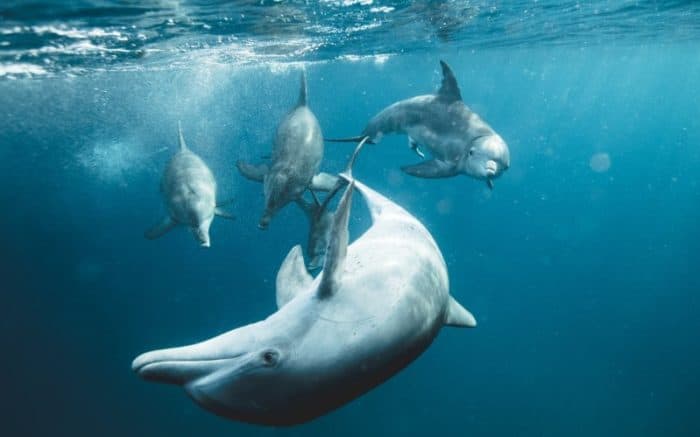
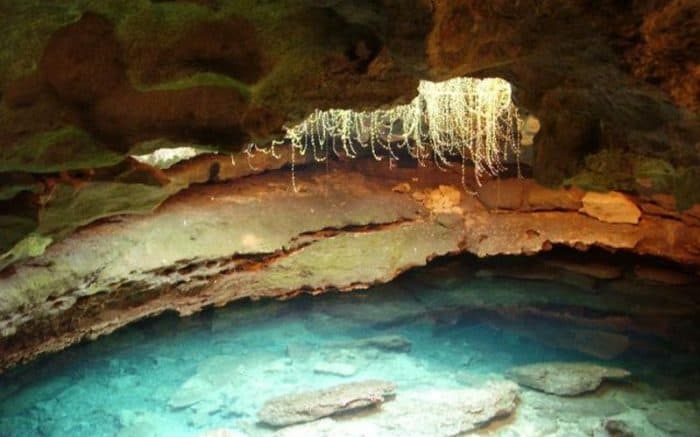
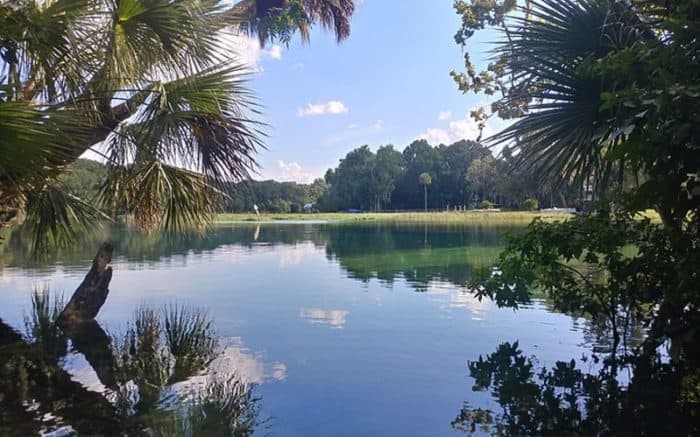
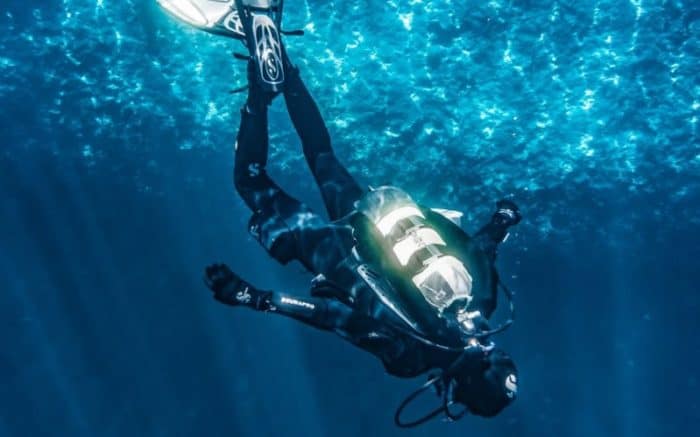
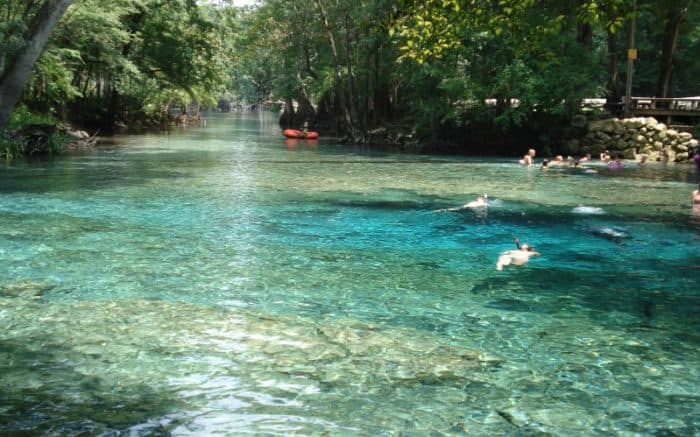
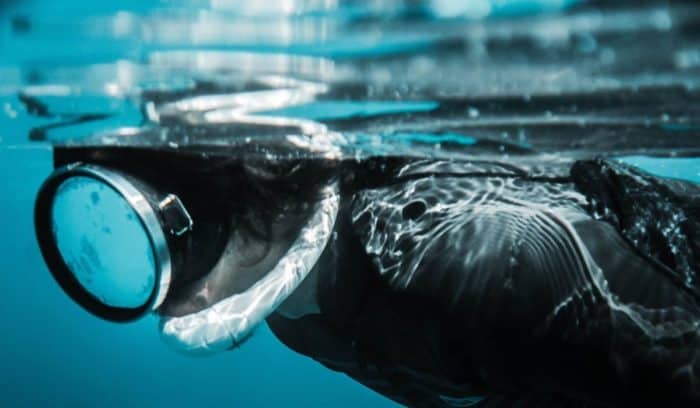
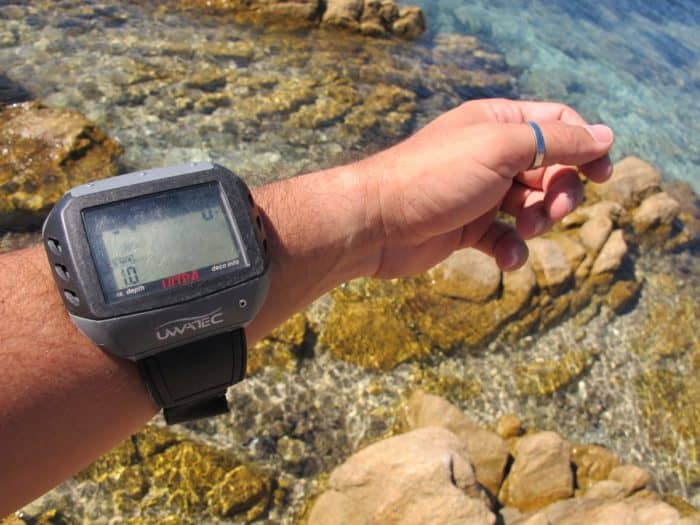
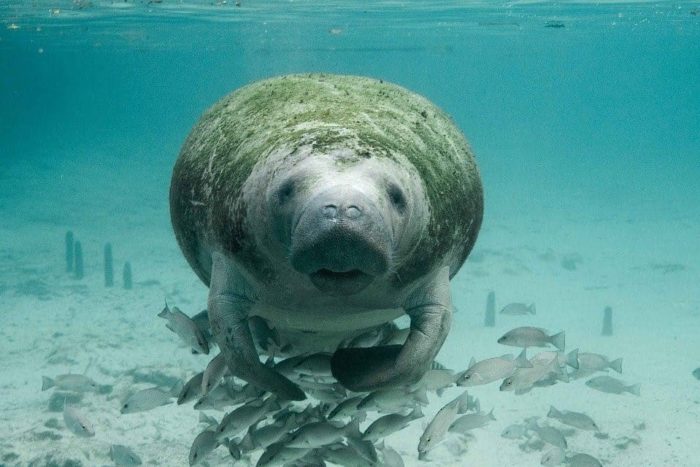
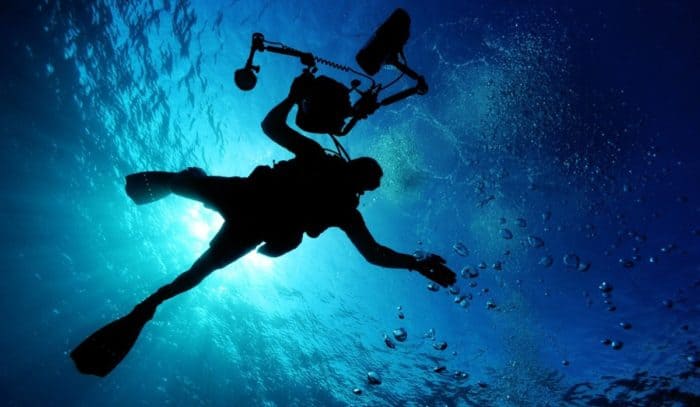








2 Comments
John Williams on May 16, 2022
13/21 a little over half
Arnie W on January 8, 2023
Great article Ian! I’m looking for places to dive for our dive club. You’ve done a great job of describing these spots; a difficult task considering all the dive destinations available to us! Thanks!!